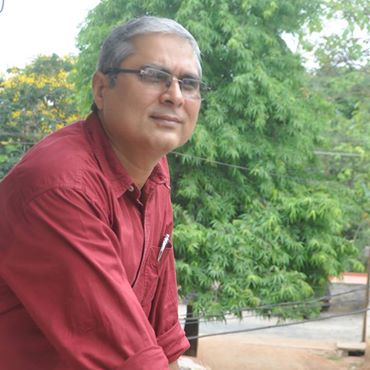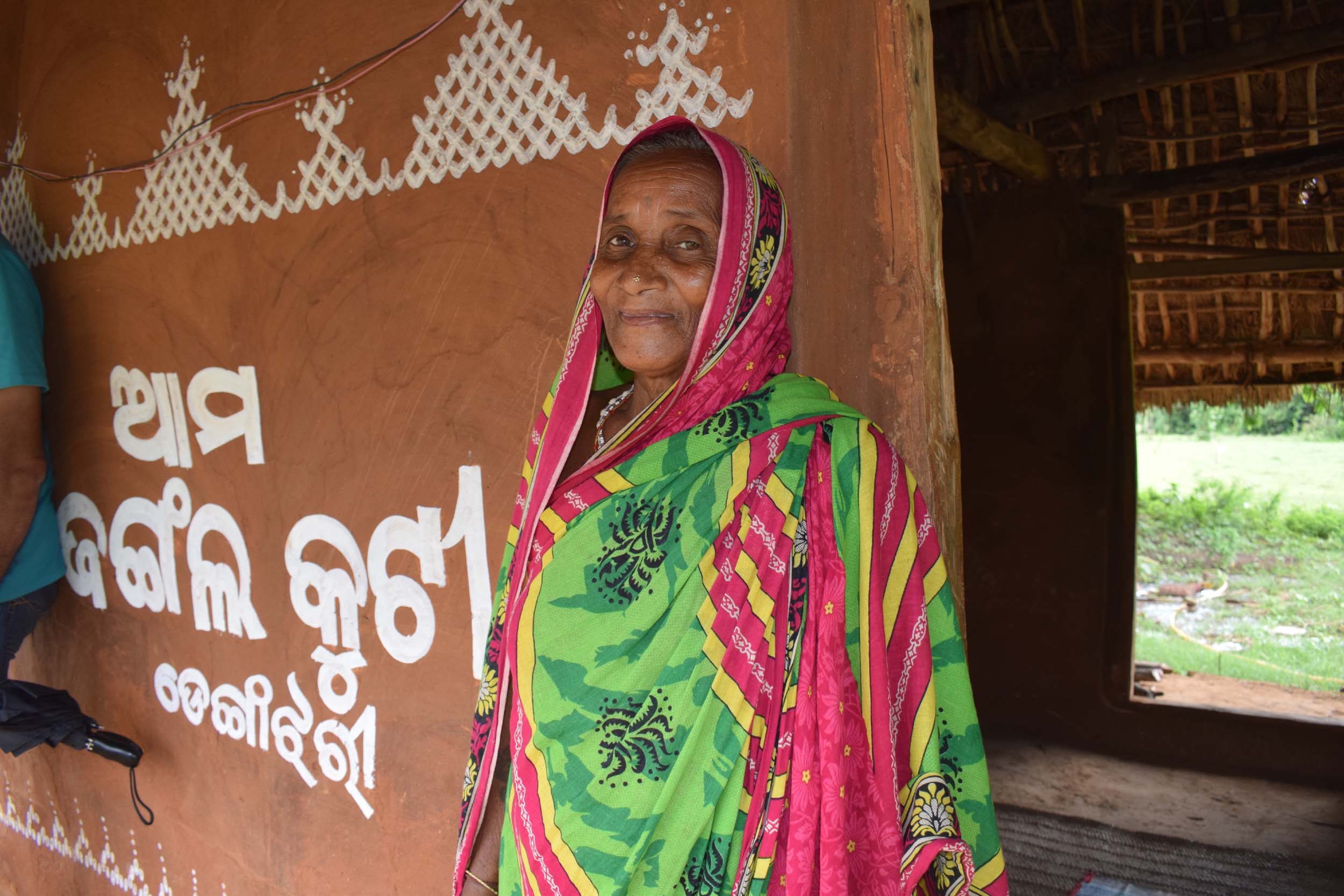These village women in Odisha fight timber mafia, reclaim lost forests and streams
The unrelenting fight of a forest committee comprising women and led by Sasi mausi, 67, has helped regenerate the forests, providing villages with most of their requirements for sustenance


Flanked by hills on two sides, Dengajhari, in the Ranpur block of Odisha’s Nayagarh district, is a small village comprising 31 families – 21 of Kondh Adivasis and 10 of Dalits.
In the 1970s, the hills turned barren due to rampant felling of trees by the timber mafia, that had flourished because of growing demands from cities and industries. As a result, the wildlife vanished, four streams originating from the hills dried up, and the farmland downstream suffered drought.
Traditionally, the villagers had depended on the dense forests covering the hills for sustenance and the shrinking forest cover affected their livelihood. So, they fought back and began to protect the hills. But, as the hills started reclaiming some greenery, the timber mafia was back. By the mid-1980s, the men in the village were finding it hard to face the challenge of continual conflicts with outsiders and the timber mafia, bent on looting the forests that were full of sal trees, which fetch a high price in the market.
“We had several face-off with the intruders. Many villagers were assaulted by criminal elements for opposing the felling of trees. As residents of a small village, we did not have enough resources to fight the miscreants, who were backed by powerful people,” said Gauranga Pradhan.

Even as the villagers were apprehensive of losing the forest cover, Sasi Pradhan, a feisty young woman of the village, decided to lead the conservation efforts. Sasi formed ‘Maa Maninaga Jungala Surakhsya Samiti (village forest committee)’ by organising other women of Dengajhari to ward off any outside intrusion into the forests.
Under her guidance, the women were divided into three-member patrolling teams to guard the vast forest area on a rotation basis with lathis in their hands; they called it ‘thengapali’ (thenga means lathi, pali means rotation).
The women had several confrontations with the intruders, who tried to humiliate and shame them with verbal abuse. But Sasi and her team held on to their position and ultimately succeeded in driving the timber looters away.
“When they hurled abuse at us, we gave it back to them with double the vigour. Finally, the patience, perseverance and grit of the women worked wonders,” said Sasi, now 67, with a disarming toothless smile on her face.
The old woman, mostly draped in a simple cotton saree, is fondly called ‘Sasi mausi (aunt)’ by most people in Dengajhari and neighbouring villages. Sasi is extremely happy to see the dense tree cover regenerating across 1,500 acres over the hills due to the efforts of the women brigade of Dengajhari.
Besides being a natural habitat of sal, the forests in Dengajhari are also full of other tropical species like mahul, mango, jamun, jackfruit, cashewnut, kendu, bamboo and many varieties of medicinal plants. A particular grass variety used for roofing also grows abundantly in the forests.
Villagers say forest department officials do not intervene in the functioning of the women’s group as they know the forests are in safe hands. With the forest cover back, the four streams have got recharged and have become perennial.
In 2006, the villagers diverted water from the streams to their paddy fields with support from Vasundara, a non-profit based in Bhubaneswar. The water has guaranteed irrigation for at least one crop in a year to over 100 acres of agricultural land. Besides paddy, the villagers grow pulses and vegetables.
The villagers have also dug up a two-acre pond to store the water from the streams. Recently, a purified piped drinking water project was launched in Dengajhari by the villagers with support from Madhyam Foundation, another Bhubaneswar-based non-profit, and Tata Trust.

“All these have been possible because the forest conservation efforts of Sasi and her women brigade drew national attention to Dengajhari. The men-folk in the village are happy to be supporting the women’s endeavours, ” said Balmukunda Jhara.
The natural regeneration of the forests has helped rebuild a strong ecosystem in the area. Hemanta Sahoo, a researcher with Vasundhara, said as the women under Sasi’s leadership allowed natural regeneration instead of plantation, many other mechanisms automatically played their role.
“Wildlife, including deer, boar, peacock, monkeys and bears, is back and so are several types of birds. They play their role in enriching the ecosystem around Dengajhari,” Sahoo said. The forests and the enriched ecosystem have led to a manifold increase in the collection of minor forest produces, adding to the livelihood of the people. The collection of sal leaves and cashew nuts provides a big livelihood to the villagers.
The forests have also enriched the nutritional needs of the villagers by offering diverse food like fruits, tubers and roots. Besides, the villagers have cashew nut trees on their individual plots, which gives them
a yearly average income of about Rs.20,000. Women from each household of Dengajhari are members of the Maa Maninaga Jungala Surakhsya Samiti, while there are 12 executive members.
The women have constructed a beautiful hut with thatched roof, which functions as their office and meeting place. “We regularly hold meetings to chalk out plans for the protection of the forests as well as the use of forest produce in a sustainable way,” said Nisha Pradhan.
All expenses for the women’s activities come from a revolving fund of the committee, set up with contributions from all members. On an average, the fund has about Rs 25,000 at any given time. But, according to the women, they do not need much fund as they contribute their own labour.

Every year, the villagers renovate their houses with materials obtained from the forests, like wood, soil and grass used for roofing. Anyone repairing or renovating a house must take the approval of the committee to bring materials from the forests.
The conservation activities have transformed Dengajhari into a throbbing sustainable economic unit. Villagers proudly say that they get almost everything they require for their daily lives from the forests, except commodities like oil and salt. People of some neighbouring villages, too, extended help to protect the forests after realising the benefits of safeguarding it. The forests of Dengajhari do not have many intruders these days.
But for Sasi and the women forest committee, there is no letting up and they continue to patrol the forests. Sasi says she wants to take a break and pass the baton to the younger generation, but the women in Dengajhari insist she remains their leader. “She is our beacon of hope and motherly figure. She is a good organiser and mobiliser. We cannot think of her not being our leader,” said Chhatiani Janni, a woman in her mid-50s.
Interestingly, the women patrol teams have never faced attacks from any wild animal. Sasi said: “The animals are well aware that we are their protectors, not enemies.”

